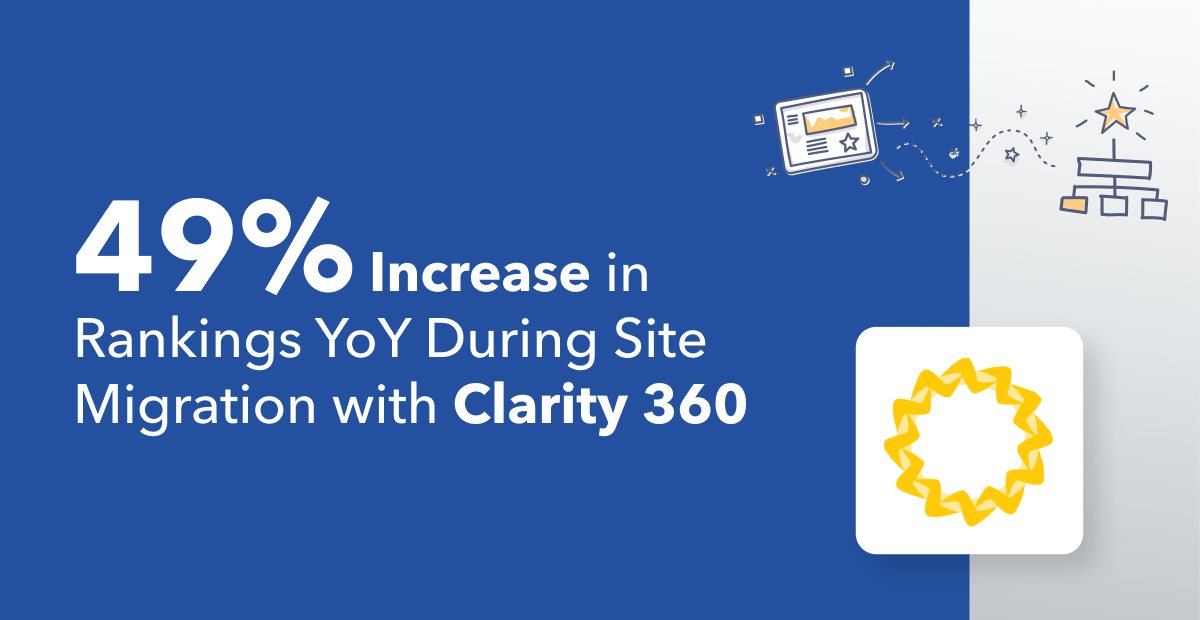You’ve got AI search visibility data in hand and now you’re wondering, what’s next?
Navigating this rapidly evolving space can feel overwhelming. It’s unfamiliar, constantly shifting, and filled with more questions than answers.
But one thing is clear: doing nothing isn’t an option. Because while you’re waiting, others are already testing, learning, and moving ahead.
To help you take that first step, we’ve pulled together a straightforward list of actionable AI search optimizations.
These are based on what we do know—drawn from our own in-depth AI search research as well as collaboration with other SEO pros already experimenting and learning in this space (check out our webinars!)
- The Visibility War in AI Search: What the Data Reveals [Webinar]
- How to Optimize Your Content Strategy for AI Search Success [Webinar]
- AI Search Decoded: Unlock Traffic and Brand Growth [Webinar]
What Can I Do Once I Know My Visibility in AI Search?
AI search visibility data can tell you a lot. It gives you insight into:
- Is your brand showing up in AI-generated answers?
- Are you being mentioned or cited — or are competitors getting the credit?
- Is your content being used in AI responses, even if it’s not clicked?
These are crucial signals. They help you understand your presence in the emerging AI search landscape—and more importantly, where you’re missing out.
Once you have this knowledge, the next step is action.
Here are key AI search optimizations you can start making today using data from Clarity ArcAI:
-
If Your Content Isn’t Showing Up in AI Search for Key Topics → Use the Chunk and Conquer Method
-
If AI Bots Are Crawling Unexpected Pages (Or Skipping Key Ones) → Expand Your AI Bot Analysis
-
Wondering What Your Biggest AI Search Blind Spots Are? → Run a Bulk Prompt Triage
-
If You’re Missing from Third-Party Roundups in AI Answers → Take the Citation Leapfrog
-
If You’re Not Showing Up for Repeated Questions → Mind the Gaps in Topic Coverage
-
If You’re Showing Up in AI Search But the Message Is Wrong → Run an Accuracy & Sentiment Analysis
If Your Content Isn’t Showing Up in AI Search for Key Topics → Use the Chunk and Conquer Method
AI search engines parse content at the passage level. This means they're not really looking at the whole page, but diving in deep to look for answers to specific questions. It also means that loose prose often gets skipped.
To stay visible, identify the key questions your users are asking about your topic. Then, structure your content so that each section is focused, clearly written, and answers one specific question.
It should answer the question completely without the need to refer to other sections of the page to get the whole picture. Additionally, use clear, descriptive H2 and H3 headings that directly reflect those questions.
One simple test: imagine taking a screenshot of a section on your page and sending it to a colleague or friend. Can they immediately tell what it’s about just from that snippet? If yes, you’re on the right track for AI visibility.
Here’s an example:
Pro Tip: Test this approach on a single high-priority page. Then monitor that page in Clarity ArcAI for new citations over the next few weeks to gauge impact.
If AI Bots Are Crawling Unexpected Pages (Or Skipping Key Ones) → Expand Your AI Bot Analysis
Just like in traditional SEO, you can learn a ton about optimizing for AI Search engines by just looking at your server logs.
AI search engines have to crawl your pages just like Google or Bing would to build their LLMs and to get the results for real-time searches.
By analyzing your bot files, you can see AI bot activity—showing you which pages they consider useful, and perhaps more importantly, which ones they’re ignoring.
You can check your own log files, or you can let Clarity Arc AI's Discover function do the work for you.
Here’s what to do next:
- Prioritize pages with high bot activity. These are seen as valuable—so enrich them with fresher content, FAQs, examples, or expanded sections to strengthen their utility.
- Investigate key pages that aren’t getting crawled.
- Are AI bots being blocked unintentionally?
- Is the content clear, structured, and relevant enough to be worth indexing?.
Wondering What Your Biggest AI Search Blind Spots Are? → Run a Bulk Prompt Triage
In Clarity ArcAI, run an analysis of between 1,000 and 10,000 prompts using the AI mode type.
Prioritize the prompts where you do not have visibility, but your competitors do. Now group those priority prompts by topic and track them in Clarity ArcAI Visibility to measure success from content optimization.
If You’re Missing from Third-Party Roundups in AI Answers → Take the Citation Leapfrog
AI answers love authoritative round-ups. If you’re absent, you’re likely invisible.
In Clarity ArcAI Search Visibility, look at the details of citations to find the ones where your brand was not mentioned but should have been.
Use the provided URLs to review those pages directly and make sure you aren’t mentioned, as AI answers may occasionally omit you by mistake even if you're listed.
If you're not mentioned:
- Reach out to the publisher and ask to be added to their list or roundup.
- Offer something of value—a product update, a unique data point, or an expert quote—to increase your chances of inclusion.
- Promise to follow up with information on how the mention impacted your site’s visibility in AI search results. Framing it as a knowledge-share helps your request come off as a professional collaboration, not a spammy pitch.
This strategy lets you leapfrog your way into AI citations—by optimizing the third-party content that feeds them.
If You’re Not Showing Up for Repeated Questions → Mind the Gaps in Topic Coverage
Think of your Brand Visibility report as a content gap analysis. Sort by questions where your brand is consistently not appearing in AI answers—it’s a sign that your content isn’t fully covering what users (and AI search engines) are looking for.
Look at the specific questions and then pull the unique entities in each of those questions.
In this example, the topic was accounting services. We see things like “proactive approach to tax planning,” “reduce my tax liability,” and “specific business industries.”
Next, audit your existing content:
- Are those topics clearly and explicitly covered?
- Do you have distinct passages that directly answer those questions?
If not, expand or revise your content to include them. Then monitor your visibility over time to see if those gaps start to close.
If You’re Showing Up in AI Search But the Message Is Wrong → Run an Accuracy & Sentiment Analysis
Showing up in AI search is great—but what the AI answer says about you matters just as much.
AI citations and mentions don’t just increase visibility; these answers become your spokesperson. That means you need to analyze not only your presence in AI responses, but also the accuracy and tone of those responses.
So here’s what to do:
- Audit how your brand is being represented in AI answers. Are AI-generated responses factually correct? Is the tone favorable, neutral, or subtly dismissive?
- Investigate the sources being cited. Are the right pages being accessed to fuel those answers?
- Improve clarity, freshness, and retrievability in your content—especially on pages related to misrepresented topics.
- Use Clarity ArcAI to monitor sentiment, factuality, and source attribution across AI responses over time.
Conclusion:
With the right visibility data and a few focused actions, you can start optimizing for AI search—right now.
Clarity ArcAI is built to support that journey, helping you uncover blind spots, track performance, and stay visible where it matters most.
Start optimizing your AI search performance with Clarity ArcAI today.








Comments
Currently, there are no comments. Be the first to post one!